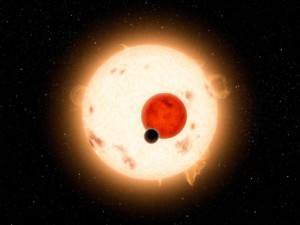
The Kepler space telescope have discovered 11 new planetary systems, hosting 26 confirmed planets. The discoveries adds to the list of confirmed planets outside the Earth’s solar system to 729, of these 60 has been found by the Kepler team
The Kepler telescope was successfully launched into space from Cape Canaveral Air Force Station, Fla., aboard a United Launch Alliance Delta II at 10:49 p.m. EST March 6, 2009. Kepler is designed to find the first Earth-size planets orbiting stars at distances where water could pool on the planet’s surface. Liquid water is believed to be essential for the formation of life. The mission is focused on discovery and as the mission progresses, Kepler will drift farther and farther behind Earth in its orbit around the sun. NASA’s Spitzer Space Telescope, which was launched into the same orbit more than five years ago, is now more than 62 million miles behind Earth.
“Prior to the Kepler mission, we knew of perhaps 500 exoplanets across the whole sky,” said Doug Hudgins, Kepler program scientist at NASA Headquarters in Washington. “Now, in just two years staring at a patch of sky not much bigger than your fist, Kepler has discovered more than 60 planets and more than 2,300 planet candidates. This tells us that our galaxy is positively loaded with planets of all sizes and orbits.” Kepler identifies planet candidates by repeatedly measuring the change in brightness of more than 150,000 stars to detect when a planet passes in front of the star. That passage casts a small shadow toward Earth and the Kepler spacecraft.
The new planets discovered, orbit close to their host stars and range in size from 1.5 times the radius of Earth to larger than Jupiter. Fifteen of them are between Earth and Neptune in size, and further observations will be required to determine which are rocky like Earth and which have thick gaseous atmospheres like Neptune. The planets orbit their host star once every six to 143 days. All are closer to their host star than Venus is to our sun.
See the announcement here: NASA Mission News
